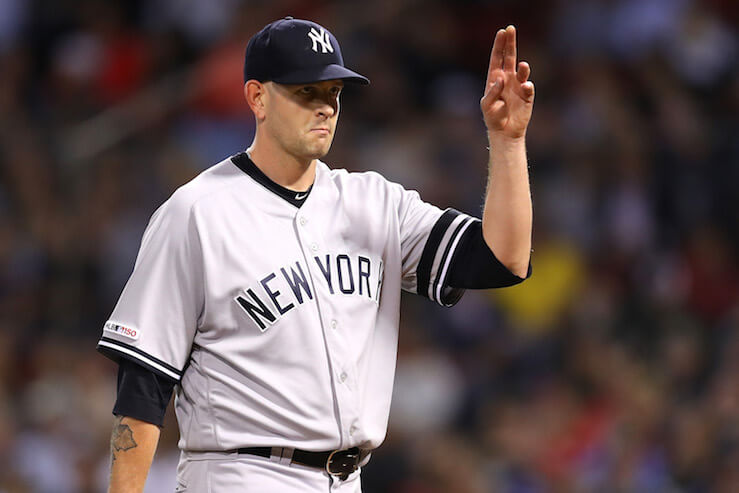James Paxton’s recent emergence as an ace is going to be a godsend for the New York Yankees.
As the top team in the American League prepares for an October run, their largest issue — as it has been all season — has been their starting pitching.
Their expected ace, Luis Severino, who is still working his way back from injuries to his rotator cuff and lat, hasn’t thrown a single pitch in the majors this season.
It left the Yankees with a concerning combination of starters ranging from the surprising Domingo German and his 17-4 record to the struggling JA Happ and his bloated ERA that’s over five.
Somewhere in between this year has been the inconsistent Masahiro Tanaka and oft-injured CC Sabathia, as a litany of injuries has forced the Yankees to experiment with reliever Chad Green as an opener.
Then there was Paxton — acquired from the Seattle Mariners over the winter and expected to be the No. 2 man behind Severino in a healthy Yankees rotation.
Initially, it was an unfair expectation to put on the southpaw despite his previous strong seasons in Seattle.
Paxton was going to experience a new workload having pitched more than 136 innings just once before in his career. Plus, he was a flyball pitcher entering a home-run-friendly ballpark in Yankee Stadium and had a history of control issues. That was a concerning combination with a questionable defensive catcher like Gary Sanchez behind the plate.
Those concerns seemed plenty warranted after Paxton’s difficult start to life in the Bronx.
He struggled mightily in his first 18 starts, posting a 4.72 ERA in 89.2 innings pitched with 17 home runs allowed through July.
It’s not No. 2 stuff when opponents are slashing .282/.346/.499 against you.
The turn of the calendar to August, however, has brought about the Paxton that most Yankees fans were expecting to see.
In his last eight starts, he’s 8-0 with a 2.57 ERA with just five home runs allowed in 49 innings pitched.
He’s pitched two-straight gems, following up a seven-inning, one-hitter with 12 strikeouts against the Texas Rangers with 6.2 innings of shutout ball and seven strikeouts against the Red Sox in Boston on Monday night.
What’s been the main change?
Paxton is throwing his devastating curveball more often after putting it on the back burner for the first half of his Yankees career.
“My curveball plays off my fastball really well,” Paxton told Lindsey Adler of The Athletic. “They start off the same plane, so guys have to decide whether it’s the curveball or fastball and I think they sometimes get stuck between a little bit.”
During that difficult stretch of 18 starts, Paxton was throwing his curveball on an average of 14.3-percent of his pitches per outing, per Fangraphs.
The lack of use made it easier for opposing batters to identify a fastball that lacked bite due to a knee injury, thus making him a more predictable pitcher.
Now healthy, Paxton’s fastball has life and he’s going to his curveball a lot more.
During his 8-0 run, his average curveball use has jumped to 25.1-percent per outing.
His resurgence is providing the Yankees with a clear answer to a lingering question that has sat in the back of their minds all summer:
Who would start Game 1 of a playoff series?
While German’s record has been sterling, his ERA over his last nine starts has been at a swollen 5.73. During that same stretch, Happ’s is at a 5.63.
Tanaka’s is even worse with a 5.95 over his last 10 outings.
Sometimes it’s best to treat your starting pitchers like NHL teams do with their goaltenders approaching the playoffs. And that’s to ride the hot hand.
Paxton is exactly that.



















